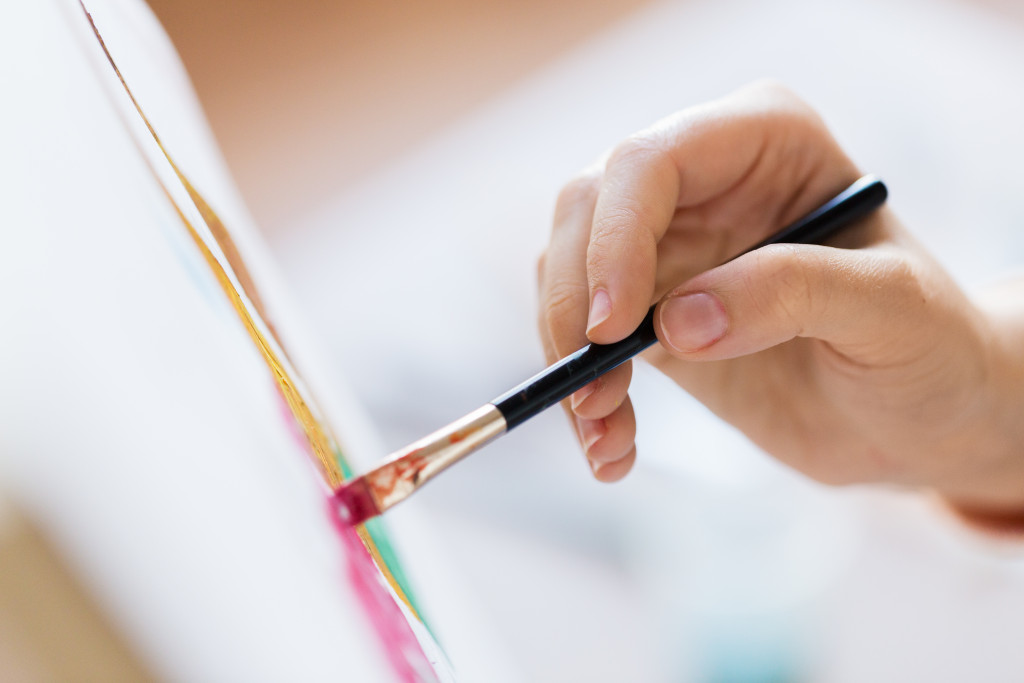- Create an art-friendly environment at home with designated space and proper supplies.
- Expose children to diverse art forms through exhibitions, performances, and discussions.
- Invest in formal art education through classes or online resources.
- Encourage daily artistic expression for consistency and mental health benefits.
- Introduce dance as a form of creative and physical expression.
Art and design are pivotal for your child’s creative, intellectual, and emotional development. Introducing them to this sphere enhances their ability to observe, analyze, and interpret the world. Here are five insightful tips to immerse your child in the arts and design.
1. Create an Art-Friendly Environment at Home
Designating a specific space at home where your child can express creativity without restrictions is crucial. Having a dedicated area fosters a sense of importance towards their artistic endeavors, motivating them to invest time and effort.
Here are tips to create an art-friendly environment at home:
Equip with the Right Tools
To facilitate creative expression, ensure your child can access various art supplies. These may include paints (watercolor, acrylic, or finger paints), brushes of different sizes, crayons, colored pencils, markers, clay, scissors, glue, and various paper types. You can also introduce them to recyclable materials like old magazines, egg cartons, or cardboard boxes, stimulating eco-friendly creativity.
Embrace the Mess
An art-friendly environment should be a safe space for creative exploration, which often includes getting messy. Furnishing the area with washable, easy-to-clean items will make it easier for your child to express themselves without fearing making a mess. Cover table surfaces with newspaper or a disposable tablecloth, and consider choosing non-carpeted flooring for easy cleanup.
Rotate Art Supplies
Consider rotating the art supplies regularly to keep your child’s interest alive. This helps maintain a sense of novelty and excitement and encourages your child to experiment with different mediums. For instance, one week could be dedicated to painting, while the next could focus on clay modeling. This variety will broaden their artistic horizons and skills.
Display Artwork Proudly
One of the best ways to boost your child’s confidence in their artistic ability is by displaying their artwork around the house. Dedicate a specific wall or area to showcase their work, changing it regularly to feature their latest creations. This allows them to take pride in their art and promotes a culture of appreciation and respect for their hard work and creativity.
2. Expose Them to Diverse Art Forms

Children should be introduced to various art forms, including painting, sculpture, photography, music, dance, and theater. Each form offers unique experiences and insights, helping to broaden their understanding and appreciation of the arts. Attend exhibitions, concerts, and performances together, discussing your observations and feelings afterward.
Engage them in conversations about different styles, periods, and artists, fostering an environment of curiosity and learning. Exposure to diverse art forms enhances their cultural awareness, empathy, and open-mindedness toward different perspectives and ideas.
3. Invest in Art Education
Enrolling your child in art classes gives them formal education and guidance to hone their skills. Art education focuses on the technical aspects and encourages critical thinking, problem-solving, and emotional expression. Look for local community centers, museums, or galleries offering classes tailored for children.
Art education isn’t confined to institutions. Take advantage of online resources and tutorials for times when your child prefers learning at home. The key is to offer structured learning while leaving enough space for personal exploration and expression.
4. Promote Artistic Expression as a Daily Habit
Integrating art and design into your child’s daily routine cultivates consistency and commitment to their craft. Encourage them to take a few minutes daily to draw, paint, or engage in any artistic activity. Daily practice allows them to observe their progress, setting and achieving small goals, which is fundamental for building confidence and perseverance.
Creating art as a daily habit also provides your child a constructive outlet for emotions and thoughts, promoting mental health and emotional intelligence.
5. Introduce Dance as a Form of Artistic Expression

Dance is an exquisite form of artistic expression combining physical activity with emotional and creative release. Introducing your child to dance offers many benefits.
Ballroom dancing, in particular, teaches children coordination, balance, and rhythm while allowing them to express themselves through movement. You could enroll your child in engaging ballroom classes for kids so that they also learn valuable social skills and build self-esteem. These ballroom classes will help your child learn ballroom dance steps, techniques and styles while also encouraging teamwork and communication with their dance partner.
Other dance forms include contemporary, ballet, tap, jazz and modern dance. Each style offers unique techniques and movements, allowing dancers to tell a story or convey emotions through body language.
To Wrap It Up
By actively promoting an art-rich environment, exposing your child to various art forms, investing in art education, incorporating art into their daily lives, and introducing dance, you set a strong foundation for their lifelong love and appreciation for arts and design. This multifaceted approach ensures they reap the cognitive, emotional, and social benefits of engagement in the arts.

